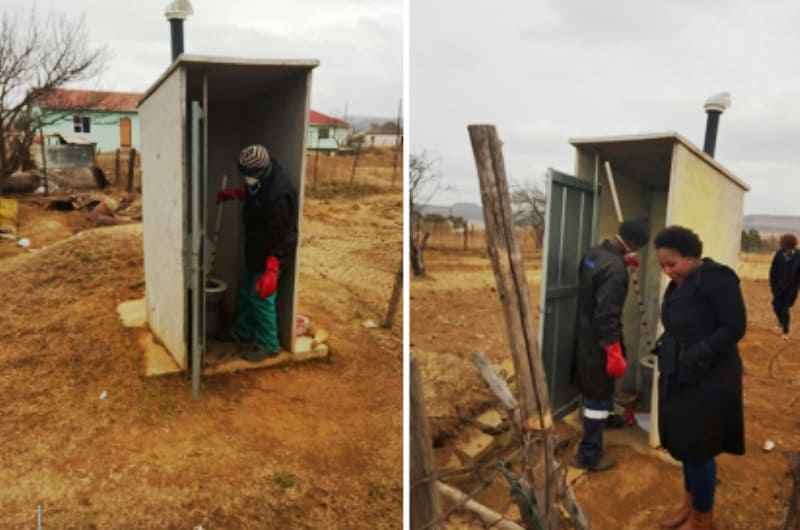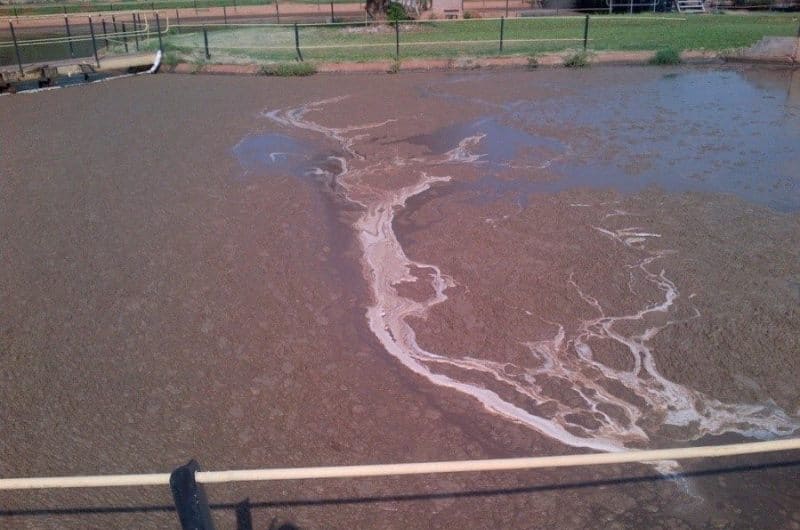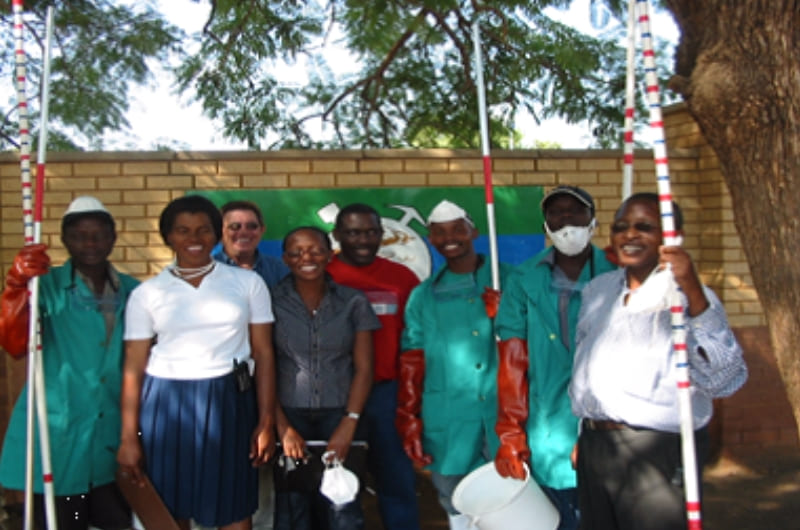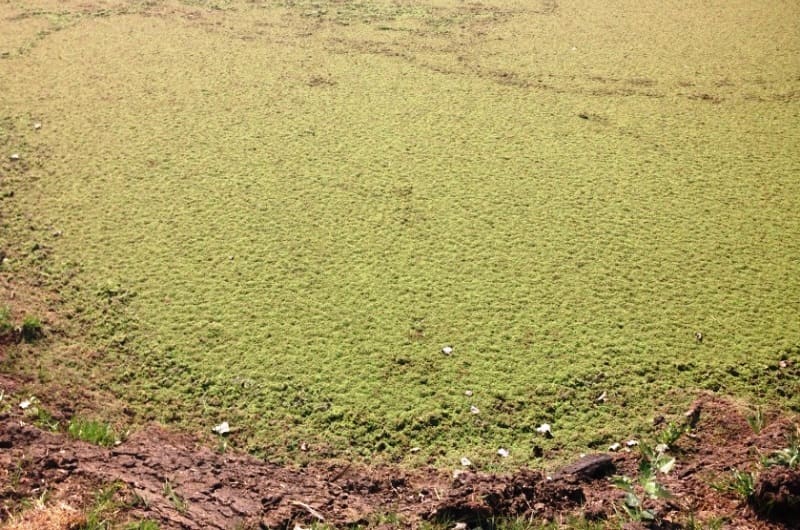
Maseke Primary School




Biotreat Microbe solution for Pit Toilets in rural areas in South Africa and removes solid human waste from pit latrines. This is great for rural areas and schools. Biotreat makes pit toilets safer and removes the bad smell from the toilets.
BACKGROUND OF SANITATION STATUS
In Africa and other developing nations, a large percentage of the population do not have access to flushing toilets. Full and overflowing household and school pit latrines have far-reaching implications. The absence of hygienic toilets is a cause major communicable diseases which in turn pose a threat to public health.
In addition to the threat of disease caused by full and overflowing pit latrines, the problem of smell, flies and cockroaches are a source of unhappiness and often despair, for households and schools alike.
Educate a woman, you educate a nation – why girls who reach puberty stay away from school.
Often toilets are unusable because they are full and overflowing. All children who are faced with these conditions face increased health risks, including diarrhea, worms and urinary infections that not only impact on their ability to learn but leads to an increased absenteeism, but girls face additional challenges. Girls who have reached puberty are less likely to attend school regularly if toilets and hygiene are inadequate and non-existent
Lack of adequate sanitation facilities in school is the prime cause of distress in the lives of those young girls. They ultimately leave school and are unlikely to return.
Another problem with pit latrines is increased insect breeding that endangers the health of users. In pit toilets and septic tanks, human excreta is a natural attractant to flies and mosquitoes which serve as transmitters of diarrheal diseases and malaria.
BioTreat™ provides a solution to this problem. BioTreat™ eliminates smells and removes the environment that flies and mosquitoes thrive in.
BioTreat™ eliminates flies and mosquitoes that attract frogs and snakes.
In summary, BlueStream’s BioTreat™ is a cost-effective and speedy solution to the household and school sanitation problem of overflowing toilets, smells, flies, cockroaches, frogs, snakes and school attendance.
Currently the preferred method of assistance that communities receive for the alleviation of the problems associated with pit latrines is the provision of honey-suckers. This method is inefficient and expensive.
The challenges and problems associated honey-suckers include the following:
The distances associated with traveling to municipal treatment areas are often impractical. This leads to unconfirmed, but widely reported practices of honey-suckers dumping the waste in nearby rivers or unoccupied land. This practice is dangerous to both humans and animals, particularly when it rains. Rivers are then further contaminated leading to additional challenges for affected communities.
Bio Treat™ Solution for pit toilets is a product manufactured in South Africa by Bluestream Environmental Sales and Technology (Pty) Ltd – a Company proudly incorporated in South Africa and 100% owned by South Africans.
It is a stable, non-pathogenic, liquid/powder of spores and vegetative micro-organisms capable of digesting complex proteins, human-solid-waste, starches, fats, cellulose and vegetable gums.
BioTreat™ is a non-disease forming, non-toxic, microbe rich powder or liquid that rapidly digests human solid waste in pit latrines and other applications. It is cost-effective in eliminating the problems associated with pit latrines, including overflowing, foul odors, flies and cockroaches.
BioTreat™ contains strains of bacteria which degrade tissue-paper, human solid-waste, fats, oils and grease at an accelerated rate and is commonly used in municipal waste-water treatment works, oxidation ponds, bio filters, lagoons, septic tanks and pit-latrines.
BioTreat™ is proposed as a solution to the above problems. BioTreat™ by contrast is:
BioTreat™ works by activating natural microbes, which produce enzymes that enable the microbes to digest human faeces, reducing the pile of solids by converting solid matter into water.
It was agreed that the pilot would be conducted in 60 houses.
On the day we tested 64 houses which were identified in consultation with the Ward Councilor, Mr. Jamjam. The measurements, testing and recording were all witnessed by Mr.Jamjam, Mr. Siya Lolwana, Ms Ayanda Xaba and Mr Thabo Makweba, who were all gracious enough to spend the entire time with us, witnessing our testing procedures and the recording of the results.
Of the 64 toilets, we tested and treated 55 toilets and only tested (but didn’t treat) a further 9. These 9 were our control toilets, to evaluate what would have happened if we hadn’t treated them at all.
We tested all 64 houses, using a 2 meter, per-calibrated measuring stick. The people doing the testing were supplied with safety boots, masks, goggles, gloves and jackets.
We measured and recorded information from each house including:

Part of the testing Team outside Sakhisizwe Municipal Offices, including Ms Ayanda Xaba (Water Quality Technician); Mr Siya Lozwana (Civil Technician)
PROJECT RESULTS – UNTREATED TOILETS
The 9 toilets that we tested with Biotreat Solution for pit toilets had an average occupation of 7.1 residents per home. The levels of human solid waste in these toilets increased over the 32 day period by an average of 92%.
Average level on 18 July was 40cm, this increased by 91.6% over 32 days to an average of 76.6cm.
Total levels increased from 360cm to 690cm over this period. Up ↑ 92%

The levels of fecal matter in the 55 toilets that we treated, decreased by an average of 49%. This despite them being used every day. The average number of occupants in these homes was 6.1 people
Each owner was interviewed after the 32 day trial period and every one expressed their satisfaction with the results. They were all very pleased with the reduction in smell and flies. The trial results are even more impressive as the project was conducted in the coldest month of the year, when our microbes are at their least efficient.
Average level on 18 July was 86cm, this decreased by 49% to 44cm over 32 days.
Total levels decreased from 4,73 metres to 2,45 metres. Down ↓ 49%

We interviewed at least one resident/owner from each dwelling tested. We recorded the interviews, which were overwhelmingly positive. Here is a selection of comments:
1 Nofikile Tshungu (4 occupants)
There was a very bad smell before the treatment of the toilet, the toilet was full since the treatment, no more smell and I can see the toilet is going down and I would be very happy if you can continue treating the toilet.
2 Nobanda Nonkululeko (8 occupants)
is not full like before, no more smell, I am very happy.
3 Sandi Mbitha (6 occupants)
Before there was a bad smell but now there is a huge difference, no smell and the toilet has gone down.
4 Mzwamadoda Tikana (7 occupants)
There was flies and bad smell before, but now no smell and flies and the toilet has gone down, I will be very happy for your service again.
CONCLUSION
We believe that we have successfully demonstrated a viable solution to the sanitation challenges that face our communities on a daily basis. We are able to offer a better life for all at a competitive price, a marked improvement in living conditions – a solution that restores dignity to the community
We thank you for the time taken in the consideration of this document, and in particular, those associated with the successful implementation of the pilot project at Cala.

Scope
Tlou Pedi received an order to carbonize oil on the sewage at Mokopa wastewater treatment works. The second part includes the cleaning on formed scum on the water. Tlou Pedi also suggested seeding the existing bacteria. This report will highlight some challenges faced at Mokopa wastewater plant.
Initial planning
Our initial plan was to treat the water with EcoMarine which is supposed to break up the oil particles. With the oil broken up into molecular particles we wanted to add HydroActivator to consume the oil and any organic material (carbonizing). Seeding of the bacteria could be done after the problem of the oil was solved.

Initial volume of oil
Initial stock requirements
10 x 25 litre HydroActivator
10 x 25 litre EcoMarine
20 x 25 litre Biotreat
Challenges experienced
From the initial quote the volume of oil more than doubled. This was due to shut down maintenance at various industries and rain that flushed the pipes into the treatment plant.
The oil was in the system too long and changed into a toffee like substance. Initially our treatment did not have the desired effect because of the reasons stated above

Volume of oil when project started 22/12/2015
Solutions
We added OilLift which is an extremely strong carbonizing agent used for hard surfaces and we added a lot of activated bacteria. Adding these products got the desired effect.

Results as at 27/12/2015

Carbonizing process 24/12/2015
Stock used as at 2015/12/30
10 x 25 litres OilLift
10 x 25 litres HydroActivator
10 x 25 litres EcoMarine
50 x 25 litres Activated bacteria

On 3rd May 2004, 199 toilets from 12 different villages belonging to the Royal Bafokeng Nation, were each treated with 500 ml of BioTreat. The waste-levels of these toilets were measured before the application, and as a control, the waste-levels of a further 120 random toilets, where no BioTreat was applied, were also measured.
On 26th May 2004, all the toilets were re-measured. It was found that all the toilets treated with BioTreat had experienced a vast reduction in waste-levels, an average of 46%, whereas the levels of waste in the untreated toilets had increased by an average of 30%.
According to the residents the problem of smell, cockroaches and flies had been greatly reduced.



Did you know mixing these two products provides a great solution for the cleaning and management of neutrient rich and stagnant dams and bodies of water?
The following photos were taken at a dam near Kempton Park, Ekurhuleni. Residents of an estate bordering the dam had been complaining that the stagnant dam was unsightly and smelly. The dam has minimal flow and was overrun with vegetation.
The dam was choked with a thick layer of Duckweed and Algae. A spot was selected and Hydro Activator was sprayed on the surface using a back pack.

BioTreat was poured along the edges of the selected area of the dam into the water.The Duckweed and Algae immediately started dying in the sprayed area.
Reaction activity of the Microbes was visible with the bubbles being created by their activity. It was decided to clear the hard reeds around the island, and let the microbial activity clear the green algae and duckweed.
Progress on removal of Duckweed and Algae using BlueStream’s BioTreat and HydroActivator – seen below over a 21 day period.

Dam continues to clear


